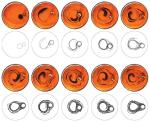Mechanical minds gear up for Adelaide
Adelaide will play host to one of the world's biggest conferences in mechanics. More than 1000 leading scientific minds from around the globe will descend on Adelaide for the International Union of Theoretical and Applied Mechanics Congress (known as ICTAM) held from August 24 to 30, 2008. Mechanics is described as the study of bodies in motion and has two distinct fields, Fluid Mechanics and Solid Mechanics. Fluid Mechanics is the study of gases or liquids and how they move, while Solid Mechanics is the study of solids and how they deform. The Congress will be jointly hosted and organised by the universities of Adelaide and Flinders, and their successful bid to host the Congress in Adelaide is the result of three years of planning by the city's mechanics community. Dr Jim Denier, who is Secretary General of ICTAM 2008 and also Senior Lecturer in Applied Mathematics at the University of Adelaide, says the Congress is held every four years and brings together the leading researchers in the field of mechanics. "It is the largest and oldest scientific meeting aimed at understanding the workings of the world around us, and it has a particular focus on how current research enhances that understanding," Dr Denier said. "Some of the issues that will be covered include: how do bacteria propel themselves? How do fluids behave in space? How are the atmosphere and ocean linked, and what effect do they have upon climate change? How do crystals grow and take the shape they take?" Story by Ben Osborne
|





